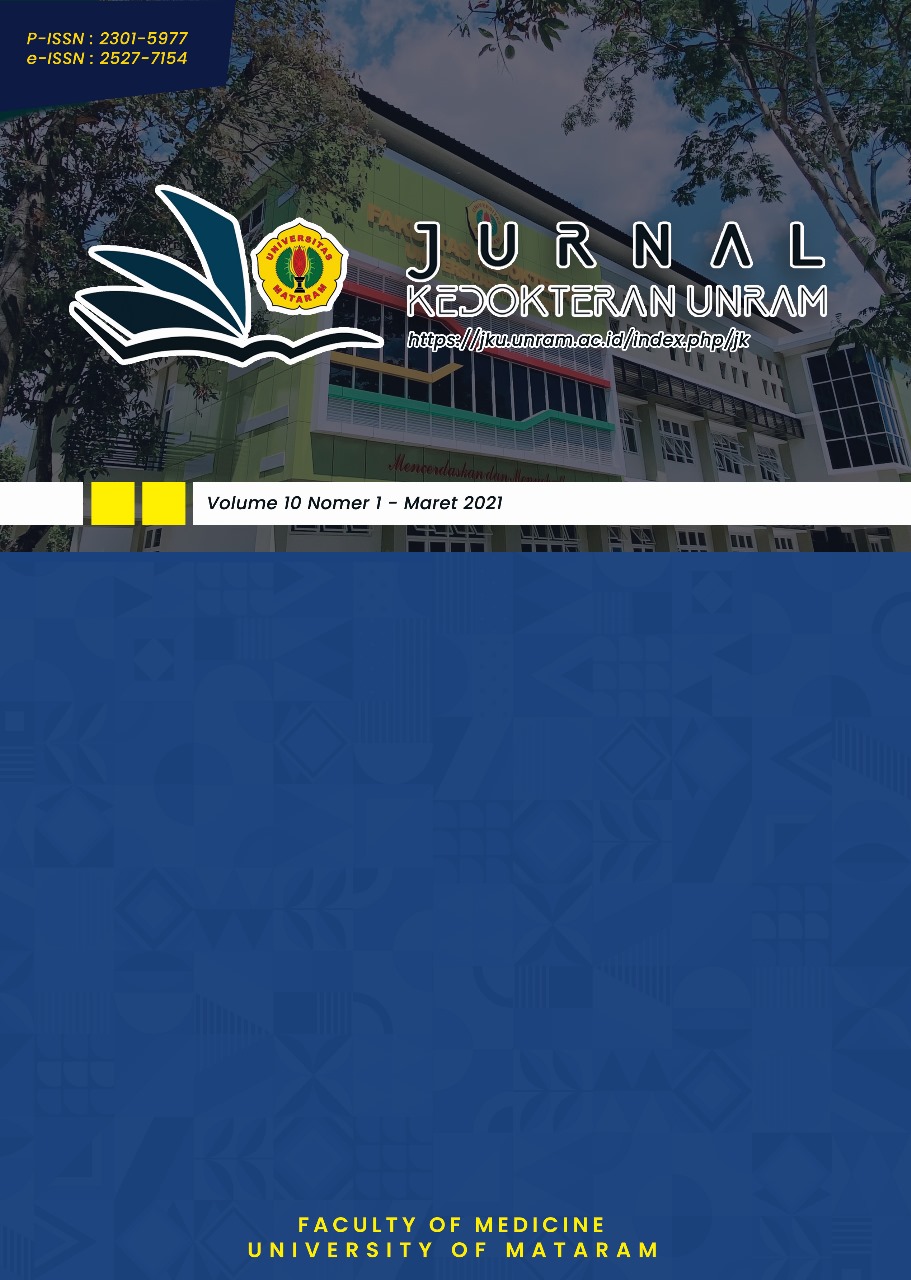Penyakit Human Immunodeficiency Virus sebagai Faktor Resiko pada Pasien Sifilis di Puskesmas Dasan Agung
DOI:
https://doi.org/10.29303/jk.v13i4.5264Kata Kunci:
Syphilis, HIV, Risk Factors, MSMAbstrak
Abstract: WHO in 2023 reported an increase in HIV prevalence in the world from 2010 – 2022 by around 23.8% from 31.5 million to 39 million. In addition, it was reported that the number of new HIV infections had decreased by 59% since its peak in 1995, from around 3.2 million to 1.3 million. HIV can be transmitted through sexual contact, non-sexual contact, and transmission from mother to fetus. In controlling HIV, STIs are the entry point for HIV infection, especially in syphilis which has become a global problem. Syphilis can increase the risk of HIV infection up to 300 times. HIV epidemic in Indonesia has been closely related to the increase of syphilis cases, both in high risk and general populations. This research is an unpaired categorical analytic with a case-control research design. This research was conducted at Puskesmas Dasan Agung, West Nusa Tenggara, from March to April 2024. The minimum number of samples required was 152 samples. This study used consecutive sampling with STI patient registration books from 2022 - 2023 to take samples. The inclusion criteria used in this study were all patients with HIV who had undergone laboratory tests at Puskesmas Dasan Agung. The exclusion criteria used were pregnant women. A total of 192 samples were collected. In this study it was found that syphilis patients had 3.93 times higher risk of HIV infection (p<0.001; CI 95%). Meanwhile, MSM patients had 2.69 times higher risk of HIV/syphilis co-infection (p=0.023; CI 95%).
Keywords: Syphilis, HIV, Risk Factors, MSM
Unduhan
Diterbitkan
Terbitan
Bagian
Lisensi
Authors who publish with Unram Medical Journal, agree to the following terms:
- Authors retain copyright and grant the journal right of first publication with the work simultaneously licensed under a Creative Commons Attribution 4.0 International License (CC-BY License). This license allows authors to use all articles, data sets, graphics, and appendices in data mining applications, search engines, websites, blogs, and other platforms by providing an appropriate reference. The journal allows the author(s) to hold the copyright without restrictions and will retain publishing rights without restrictions.
- Authors are able to enter into separate, additional contractual arrangements for the non-exclusive distribution of the journal's published version of the work (e.g., post it to an institutional repository or publish it in a book), with an acknowledgment of its initial publication in University of Mataram's Journal of Medicine.
- Authors are permitted and encouraged to post their work online (e.g., in institutional repositories or on their website) prior to and during the submission process, as it can lead to productive exchanges, as well as earlier and greater citation of published work (See The Effect of Open Access).
- This journal is open access journal which means that all content is freely available without charge to users or / institution. Users are allowed to read, download, copy, distribute, print, search, or link to full text articles in this journal without asking prior permission from the publisher or author.







